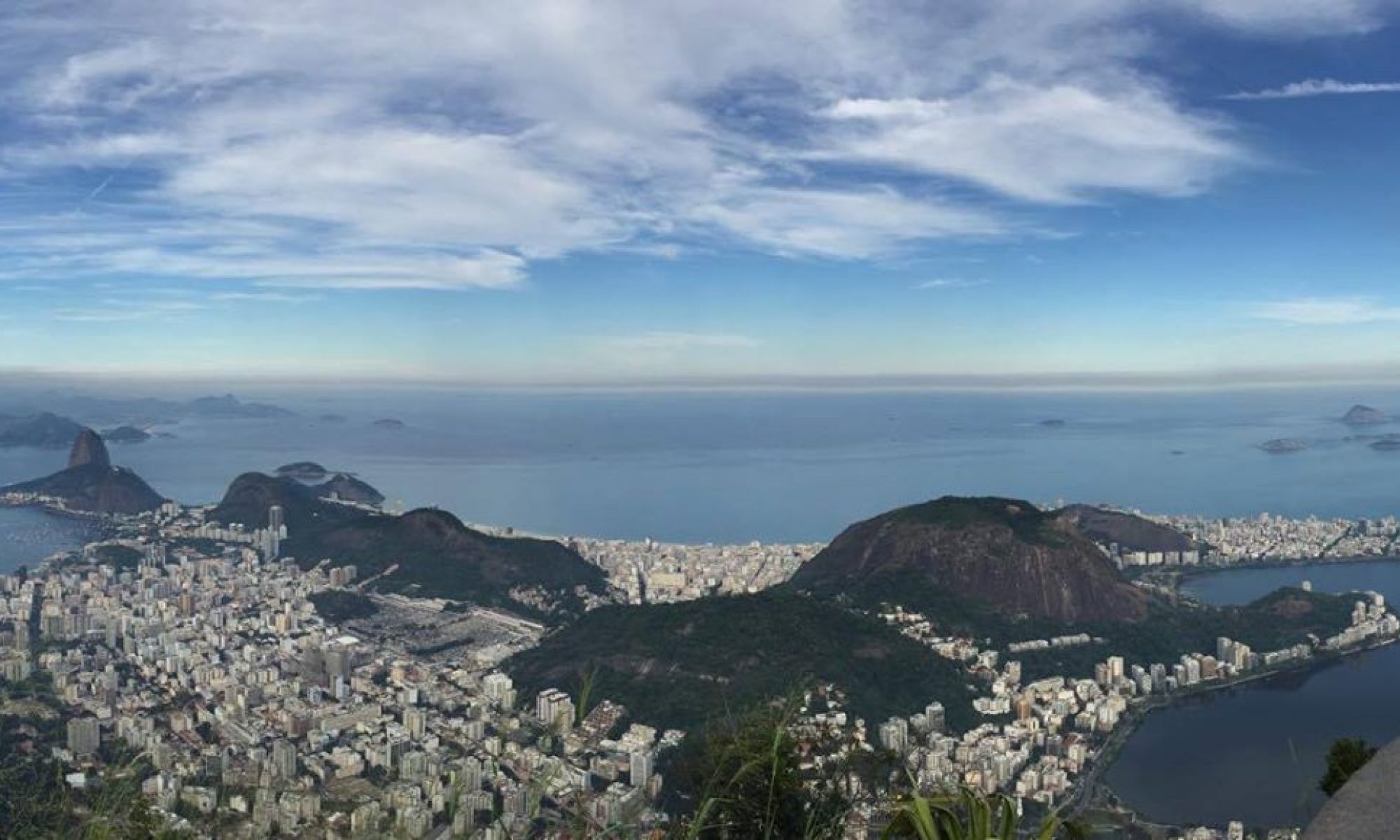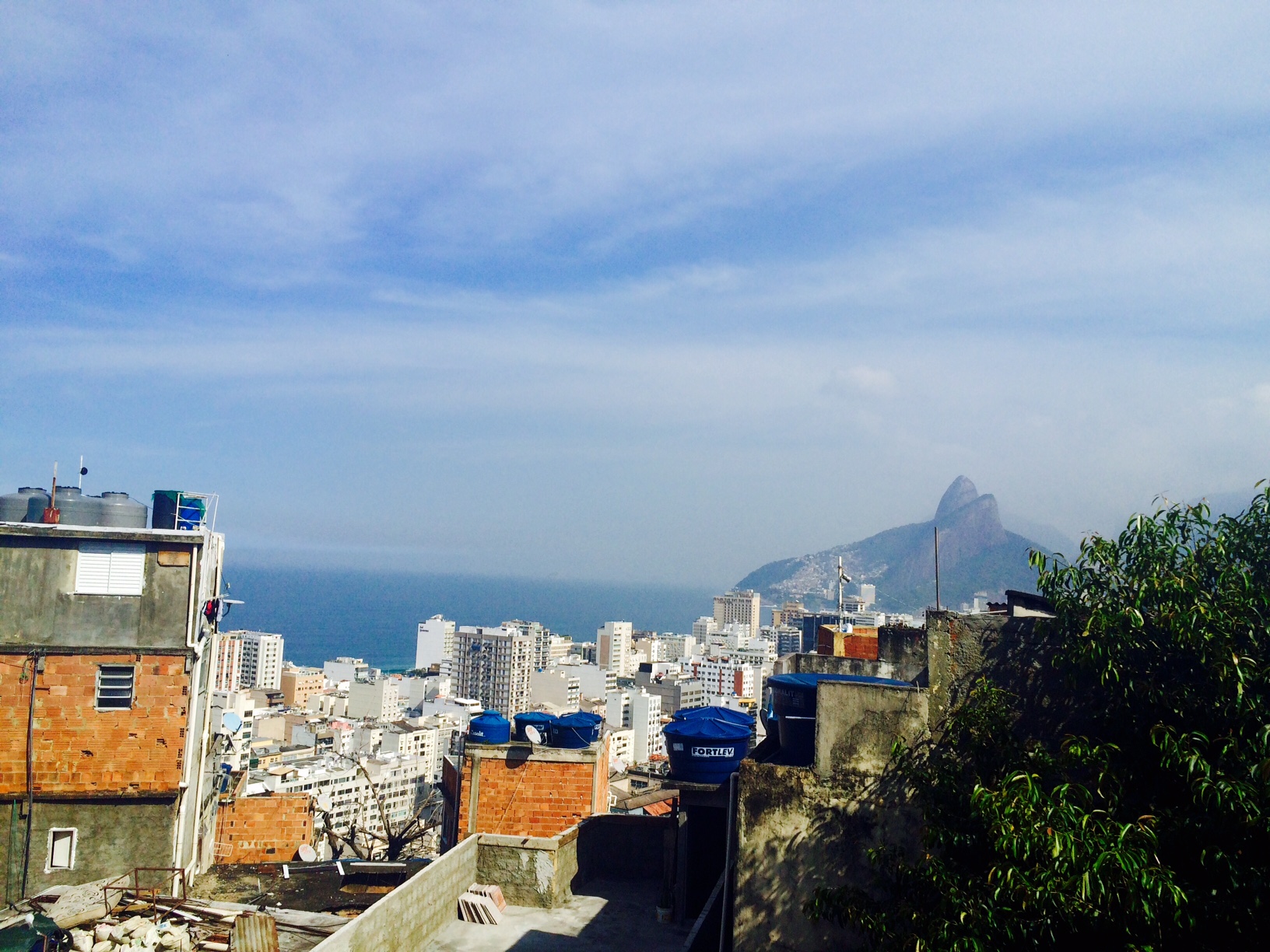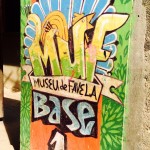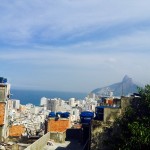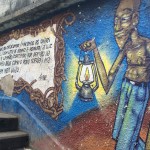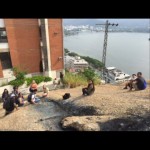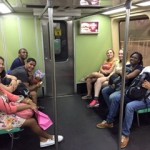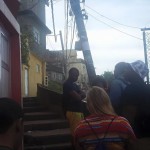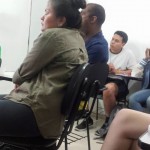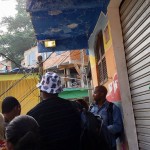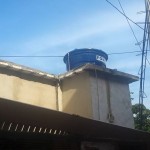May 31, 2015
By: Robert Hill and Edgar Estrada
Our 9:30 morning greeted us early with sprinkling rain. Our first stop was to two communities (favelas) named Cantagalo and Pavão-Pavãozinho, which are ‘pacified’. ‘Pacification’ occurs supposedly after the police take control and “area secured, government services – such as health care, education, cultural facilities, and civil courts – move in”, (Parenti 2011:162). We took an approximate 15 minute subway ride from Copacabana to arrive at the first community, Cantagalo. In order to reach the community, we needed to take an elevator and two flights of stairs that were connecting the subway station to Cantagalo. Upon entering Cantagalo, we were immediately noticed by the residents and cordially greeted with smiles. Every single house had a large, blue water storage tank either on top of the roof or on the side. Our first conversation was with another visitor named Alan Soares, who spoke English. Soares met us early on in the entrance of Cantagalo and immediately opened up a safe space for conversation by sharing with the group his story of how he became a tour guide for the community. He mentioned that he was not born and raised in the community, but felt a strong sense of civic urgency and responsibility to help the community break away from stereotypes that foreigners have of ‘Favelas’. Soon after, another tour guide named Rita took over. She is a journalist, DJ, and social activist at the ‘Museu de Favela’.
We were asked to not take pictures of the houses or the people in the community, out of respect for the persons and privacy, but also partially for our own protection as well. Along the way into the Museu de Favela, the group was shown several murals that were painted across community walls that conveyed stories about the history of Cantagalo. These graffiti paintings, also called “Casas Tela” (House Canvas), compose the collection of the Museu de Favela. Soon after, we reached the administration building of the Museu and it consisted of a computer room, a book room, a rooftop projector that provided the community with weekend screenings, and a store that had handmade souvenirs (hair decorations, cases, decorations, bags, and ornaments) that were made by members of the community.
As a ‘pacified favela’ Cantagalo and Pavão-Pavãozinho have a Police Pacification Unit, Unidade de Polícia Pacificadora (UPP), which is distinguishably the best maintained building in the community. Our tour guide made it very clear that living in the ‘favelas’ does not necessarily make people poor, but rather how they are just normal people living normal lives. Individuals and families residing in these communities; have enough to eat, are smart, and have the freedom to do as they please. They have a system of living that allows them to be self-sufficient. They disapprove of the misconception that they are ‘powerless’ and poor. The tour guide continued to break popular misconceptions of ‘favelas’ by adding that people live comfortably with one another. Rita made it clear that the goal of the museum is to create jobs and help people in the communities be their own entrepreneurs by owning grocery stores, restaurants, clothing stores, etc.
Once the group returned from the Cantagalo and Pavão-Pavãozinho Communities, we ate lunch and had one hour to regroup and prepare for our next speaker, Ms. Maria Amelia Vilanova, who works for Brazil’s IBGE. IBGE or the Brazilian Institute of Geography and Statistics is Brazil’s equivalent to the United States Census and collects geographical data and statistics for the entire country. Ms. Villanova gave us some vital information about the landscape, Brazil’s geography and how it pertained to the resources in the area. The first point she made, however, was that we must not allow the favela to dictate our perception of Brazil. She made it evident to us that there are too many different areas and aspects of the country for the group to create an image of Brazil that would only be the cement homes of the favela and that even the term favela hides the other kinds of poor housing in Brazil. For this reason, IBGE uses the term “subnormal agglomerates” to refer to informal settlements.
Vilanova discussed a multitude of valuable facts which allowed us to juxtapose a lot of our readings to tangible current data about the favela. Her description of the favela as a “subnormal” area and the description of the area as “four dimensional” regarding the way the residents were able to stack their houses to increase population density resembled Thomas E. Skidmore’s othering concept where he discusses how the oppressor tends to create a perception of the oppress as different and thus placing them outside normal society (Skidmore 2010:35). Within Vilanova’s discussion another concept that she pointed out is the trend in Brazil of resources being more properly allocated to people who live closer to the city. People of the favela have significantly less than those who live “on the pavement” or in the formal city. Author Christian Parenti calls this perception relative deprivation, he says “it is deprivation experienced in relation to the status of others” (Parenti 2011: 160).
Walking through the favelas today put into perspective how residents of the favelas have so little; yet, have a sense of pride beyond description. The data reveled that in comparison to Brazilians outside of the favela they have poorer education, less access to clean water and extremely higher home density. Still individuals from the favela organize, educate, and in their own way, rise up every day. Our interactions with the favela today were a reminder of the true beauty that lies beneath the struggle for a dignified life.
Skidmore, Thomas E. Brazil: Five Centuries of Change. 2nd ed. New York: Oxford UP, 2010. 30-40. Print.
Parenti, Christian. Tropics of Chaos. New York: Nation Books, 2011. 157-178. Print
